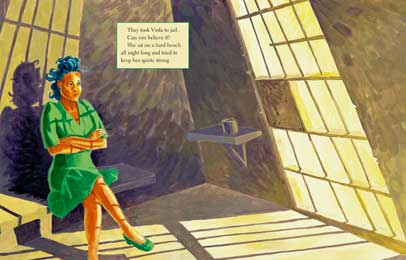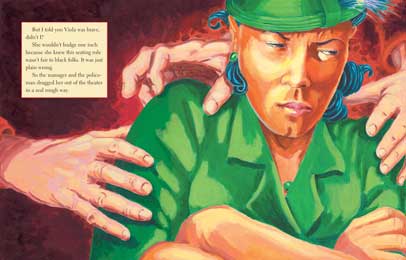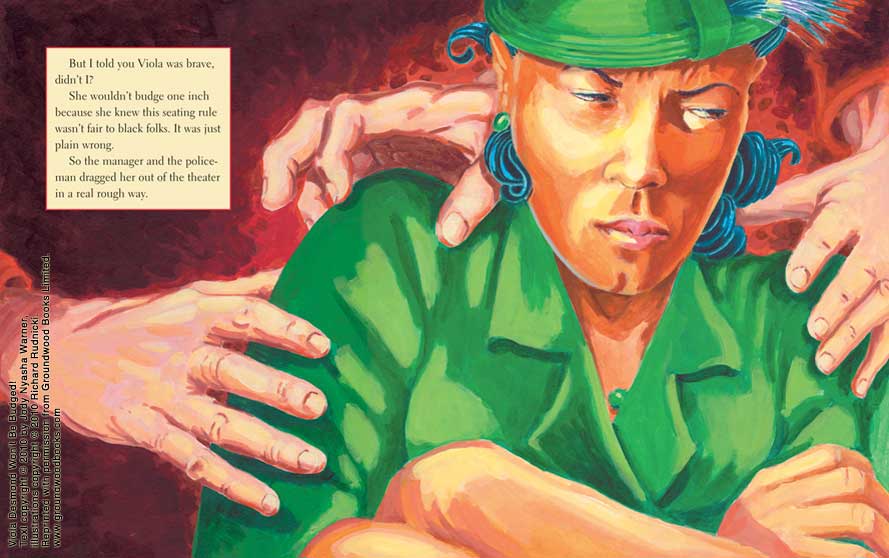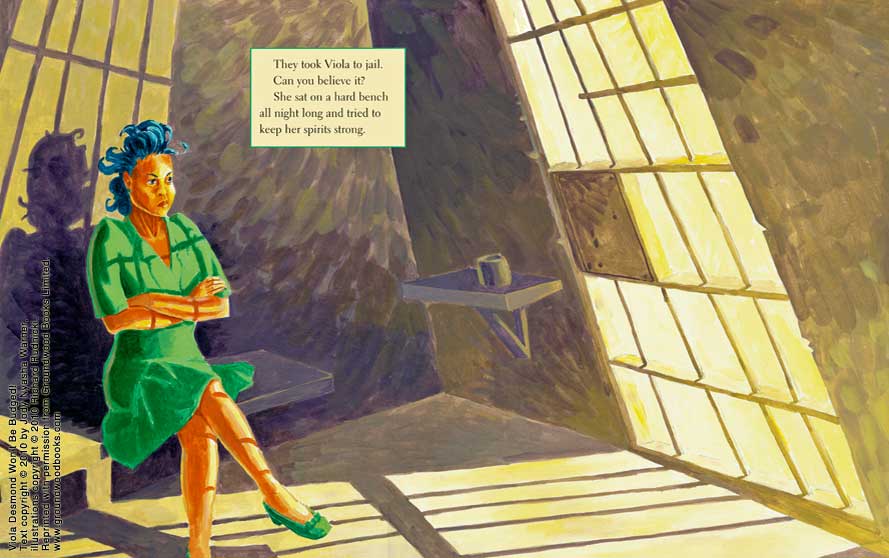In a picture book, text and art can combine to tell a story in a vibrant and emotionally stirring way. We asked the author and illustrator of Viola Desmond Won’t Be Budged! to share their inspiration.
Jody Nyasha Warner, author
“I wanted to write about Viola Desmond for a couple of reasons. From a literary standpoint, the story had a lot of drama and vitality. And at the same time, I thought this was an important incident for Canadians to know about. Sometimes we like to think we're this tolerant, harmonious country while the big, bad United States is the one with a history of slavery and racism, but the truth is those things have existed here as well. Viola reminds and inspires us to speak up against discrimination as much as we can.”
Richard Rudnicki, illustrator
“This is exactly the sort of story I love to illustrate. As an artist I am fascinated by real people, living history, strong feelings and emotions, and social justice. To tell these stories in pictures is an enormous challenge. Accuracy through diligent research is critical to my work. And, through the illustrations, it is possible to tell the back story—always relevant and interesting, but clues and visual evidence are fading fast ([though] Viola Desmond’s story happened only two and a half generations ago).”
Viola Desmond Won’t Be Budged!
Text copyright © 2010 by Jody Nyasha Warner,
illustrations copyright © 2010 Richard Rudnicki.
Reprinted with permission from Groundwood Books Limited. www.groundwoodbooks.com
Viola Desmond might never have become a Canadian human rights icon if her car hadn’t broken down in New Glasgow, Nova Scotia on November 8, 1946. While having her car repaired, the successful, Black beauty parlour owner from Halifax decided to catch a movie at the local theatre. She bought a ticket and took a seat on the main floor, not knowing that Black people were only to be seated in the balcony. When theatre staff told Viola to leave the area designated for White people, Viola stayed put and offered to pay the extra charge for a main floor ticket. She was refused; instead, the police were called. They dragged her to the station, where she spent the night.
Viola was charged and convicted of tax evasion (amounting to 1¢), the government refusing to acknowledge the charges had anything to do with her race. She went on to appeal the verdict in the Supreme Court of Nova Scotia and her public court battle lit the spark for the anti-segregation movement. In the late 1950s, the Nova Scotia government repealed their segregation legislation and in 2010, they apologized and pardoned Viola Desmond. Sadly, Viola was not there to receive the apology—she died in 1965.



